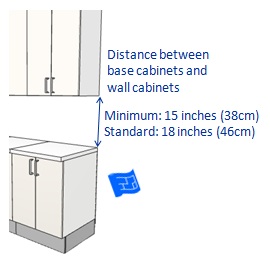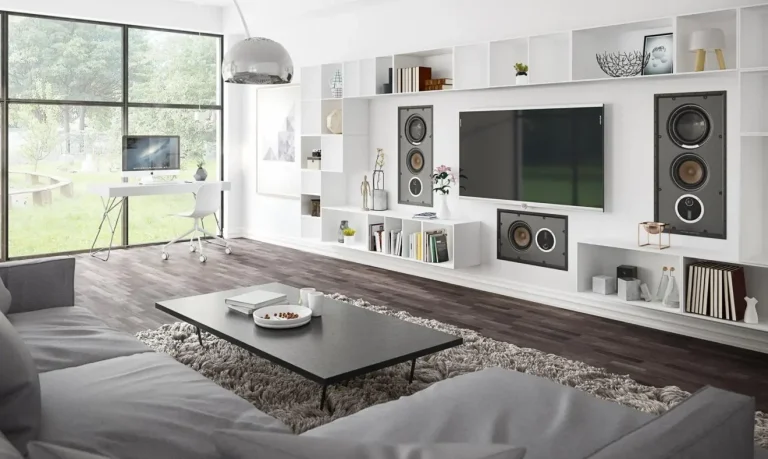What Is The Height Between Base Cabinets And Wall Cabinets?
The height between base cabinets and wall cabinets is typically 18 inches. This is the standard distance between the two types of cabinets, as it ensures that the wall cabinets are hung at the right height for easy access. It also gives enough space between the cabinets to provide a comfortable work area. The 18-inch distance can be adjusted, depending on the user’s preference or the height of the ceiling.

Overview of Standard Base Cabinet and Wall Cabinet Heights
This blog post provides an overview of the standard base cabinet and wall cabinet heights used in most kitchen designs. We will explore the different options available and discuss the pros and cons of each. We will also look at how you can customize these heights to suit your own kitchen layout and requirements. Whether you are a seasoned kitchen designer or just getting started, this blog post will help you understand the fundamentals of base and wall cabinet heights. With this knowledge, you will be able to make informed decisions and create a kitchen that looks and works exactly the way you want it to.
Factors Affecting Base Cabinet and Wall Cabinet Heights
Base cabinets and wall cabinets are two of the most essential components of any kitchen or bathroom design. The height of these cabinets is an important factor to consider when designing the layout of the space. This article will explore the various factors that affect the height of base and wall cabinets, and provide some tips for selecting the right cabinet heights for your project.
When selecting the height of base and wall cabinets, the size and shape of the room, the type of cabinet doors, and the type of countertop you will be using are all important factors. The size of the room will affect the maximum height of the cabinets, as taller cabinets will take up more space. The type of cabinet doors you choose will also determine the height of the cabinets, as some types are taller than others. Finally, the type of countertop you are using will influence the height of the cabinets, as some countertops require a taller cabinet to accommodate them.
By considering all of the factors that affect base cabinet and wall cabinet heights, you will be able to create a functional and attractive kitchen or bathroom design. Armed with this knowledge, you will be able to select the right cabinet heights for your project and create a space that is comfortable and aesthetically pleasing.
How to Measure the Height Between Base Cabinets and Wall Cabinets
Measuring the height between base cabinets and wall cabinets is an important task when planning a kitchen layout. This measurement will determine the size and placement of countertops, as well as the height of the wall cabinets. To get the most accurate measurement possible, it’s important to use a tape measure that is long enough to span the entire width of the base cabinets. Start by measuring from the floor to the bottom of the base cabinets, then measure from the floor to the top of the wall cabinets. The difference between these two measurements is the height between your base cabinets and wall cabinets. With this measurement, you’ll be able to accurately plan the layout of your kitchen.
Tips for Installing Base Cabinets and Wall Cabinets
Installing base and wall cabinets can be a daunting task for any homeowner. However, with a bit of planning and preparation, it doesn’t have to be a headache. Here are some helpful tips for installing base and wall cabinets:
1. Measure twice, cut once: Before you begin, be sure to measure, and then measure again to ensure that your cabinets are the exact size you need.
2. Level, level, level: Make sure your walls and floors are level before you start installing cabinets. This will help make sure your cabinets hang properly and that your doors will fit correctly.
3. Secure it well: Securely attach your cabinets to the wall with screws, nails, or brackets. This will help ensure that your cabinets stay in place and won’t shift or sag over time.
4. Add extra support: For extra stability, you can add additional support for your base and wall cabinets. This could include shelves, braces, or additional legs.
These tips should help make installing your base and wall cabinets a breeze. With a bit of preparation and a steady hand, you’ll have your cabinets up in no time.
Pros and Cons of Different Height Configurations
Height configurations play an important role in home and office designs, as they can affect the look and feel of a room. In this article, we will discuss the pros and cons of different height configurations, so that you can make an informed decision when it comes to designing your space.
The most common height configurations are low, mid, and high. Low configurations often create a feeling of coziness, while higher configurations can make a room appear larger. Mid-height configurations offer a good balance between the two, creating a sense of openness without sacrificing the feeling of comfort.
Pros of low configurations include improved sound absorption, as shorter walls and ceilings help to reduce echo. Additionally, low configurations are often more affordable, as they require less material and labor for installation. On the other hand, high configurations can create a sense of grandeur and luxury, and they can also make a room feel more airy and spacious.
No matter what height configuration you choose, it’s important to consider the pros and cons carefully before making a decision. By doing so, you can ensure that your space looks and feels exactly as you envisioned it.
Best Practices for Cabinet Installation
Installing cabinets can be a daunting task, but with just a few best practices, you can be confident that your cabinets will be installed properly and securely. First, be sure to measure the space for your cabinets accurately to ensure a proper fit. Also, be sure to use the right tools for the job, such as a level, screws, and shims. Additionally, make sure that you use wood glue to attach the cabinets to the wall, as this will help to ensure a strong hold. Finally, use appropriate hardware to secure the cabinets to the wall, such as screws and wall anchors. With these best practices for cabinet installation, you can be sure that your cabinets will be installed right the first time.
Common Mistakes to Avoid When Installing Cabinets
When installing cabinets, there are many common mistakes to avoid in order to ensure a successful installation. First of all, measuring the space carefully is key. Taking the time to measure the area and calculating the size of the cabinets you need will save you time, effort, and money in the long run. Additionally, make sure to use quality materials and tools for the installation. Cheap tools and materials can lead to poor results and even damage to the cabinets. Finally, take the time to level and secure the cabinets. Ensuring the cabinets are level and securely mounted will prevent any unnecessary damage or accidents in the future. With careful planning and attention to detail, you can avoid the common pitfalls that come with cabinet installation and ensure a successful installation.
Conclusion
The ideal height between base cabinets and wall cabinets is 18 inches. This height allows for ample storage space in the base cabinet and allows for functional use of the wall cabinet. It is important to consider the height in order to ensure that the kitchen is both comfortable and functional.







